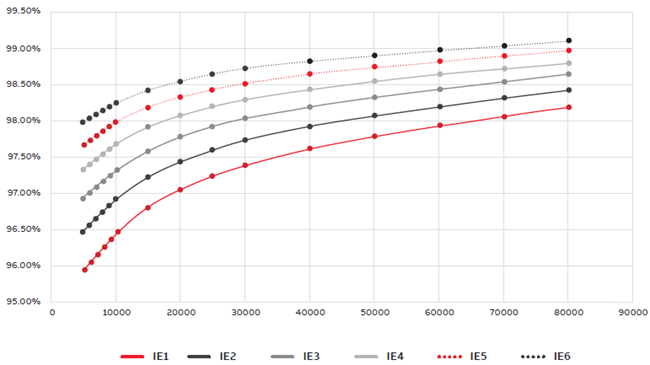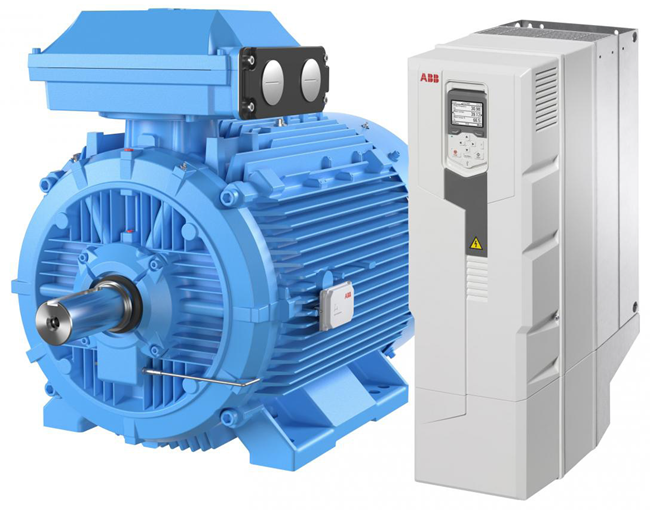Economies around the world are exploring ways to meet climate and sustainability goals, with increasing recognition of the vital role energy efficiency can play in achieving these targets.
As a result, regulations known as minimum energy performance standards (MEPS) have been introduced in many countries and regions for low-voltage electric motors. In several areas, energy efficiency requirements have also been extended to end-use equipment such as fans and pumps.
Awareness of the energy-saving potential of motor-driven systems has also driven the development of efficiency standards for testing (IEC), and classification systems for motors, variable speed drives (VSDs), and Power Drive Systems (PDS). However, there are still no mandatory regulations in place for PDS or for the application as a whole.
The first European Ecodesign regulation came into effect in 2011. A new regulation published in 2019 expanded the scope and introduced higher efficiency requirements. Figure 2 outlines the current minimum energy performance standards for electric motors, ten years after the initial implementation.

Figure 2. Minimum energy performance standards worldwide for electric motors. Image Credit: ABB Motors and Drives North America
Global MEPS
To support the development of MEPS standards, the International Electrotechnical Commission (IEC) has established standards that define efficiency classes for specific types of motors.
These standards apply only to low-voltage induction motors up to 1000 kW. Authorities around the world have used these IEC standards as the basis for their own national or regional MEPS frameworks.
Figure 2 presents the current regulatory landscape for MEPS. It is worth noting that some countries or regions use local MEPS classifications in place of IEC standards—for example, North America applies the NEMA classification system. While broadly similar, NEMA standards only extend to the equivalent of IEC's IE3 efficiency level.
The IEC standard for low-voltage direct-on-line (DOL) motors, IEC 60034-30-1, defines four International Efficiency (IE) classes, ranging from IE1 (least efficient) to IE4 (most efficient). Each efficiency class corresponds to approximately 18 % lower energy loss than the one below it. Therefore, an IE4 motor has 18 % lower energy losses compared to an IE3 motor.
Additionally, the IEC has issued a separate technical specification—IEC TS 60034-30-2—for motors used with VSDs, which includes an even higher efficiency level: IE5.
Limited Standards
A third IEC standard is currently under development, although no official timeline has been set for its enforcement as mandatory legislation in any country or region. This upcoming standard will initially apply to MV motors up to 2000 kW. However, motors with higher power ratings are excluded.
This exclusion is partly due to the relatively low volume of such motors produced and partly because efficiency is already a key consideration in their design and manufacturing. According to the IEC, introducing a new classification for these motors would not yield significant additional energy savings.
As a result, the highest forthcoming common efficiency level for MV motors—IE4—requires only up to 97 % efficiency, despite the fact that many large motors have already achieved substantially higher efficiencies.
Equally noteworthy is the limited scope of the standard. For example, it applies exclusively to motors and does not include generators. In addition, research indicates that most current standards and regulations focus only on individual components, often overlooking how those components interact within broader systems.
Yet, the potential energy savings from optimizing entire systems far exceed what can be achieved by improving single components. However, defining minimum efficiency levels and accurately measuring them in systems with high variability remains a persistent challenge.
Furthermore, because large motors typically have operational lifespans of 20 years or more, the full benefits of any new MEPS legislation would take decades to materialize.
To address these gaps, the IEC has proposed that manufacturers may apply an additional efficiency classification on a voluntary trial basis for motors that fall outside the scope of existing standards.

Image Credit: ABB Motors and Drives North America

Efficiency vs Output (kW) extrapolation for efficiency classes IE1 to IE6. Image Credit: ABB Motors and Drives North America
Potential Efficiency Gains
Using current IEC standards and data, ABB has extrapolated the potential efficiency of large motors up to a possible IE6 classification (Figure 3). This projection removes the correction factors applied in the IEC standard for outputs above 10,000 kW, resulting in a more demanding and realistic classification framework. Despite the absence of recognized standards beyond IE4, large motors clearly show potential for further efficiency improvements.
In fact, on a delivered synchronous motor rated at 44 MW, ABB achieved an energy efficiency of 99.05 %, which would be in line with an IE7 standard. Additionally, the data suggests that for large motors, IE1 and IE2 classifications are largely irrelevant, as their default efficiency levels already align more closely with IE3 or IE4, even without specific optimization efforts.
To help accelerate progress toward more sustainable industrial practices, ABB has introduced a Top Industrial Efficiency (TIE) option for motors and systems where existing efficiency standards are seen as lagging behind technological capability.
The initial focus of the TIE option will be on synchronous motors and generators above 10 MW. This focus reflects a noticeable gap between the energy efficiency of available technologies and what is currently being adopted in the market, highlighting a major opportunity for CO2 reduction.
These products already exceed current MEPS requirements by such a wide margin that it may take years before regulatory standards catch up and formally mandate these higher levels of efficiency.

Image Credit: ABB Motors and Drives North America

This information has been sourced, reviewed and adapted from materials provided by ABB Motors and Drives North America.
For more information on this source, please visit ABB Motors and Drives North America.